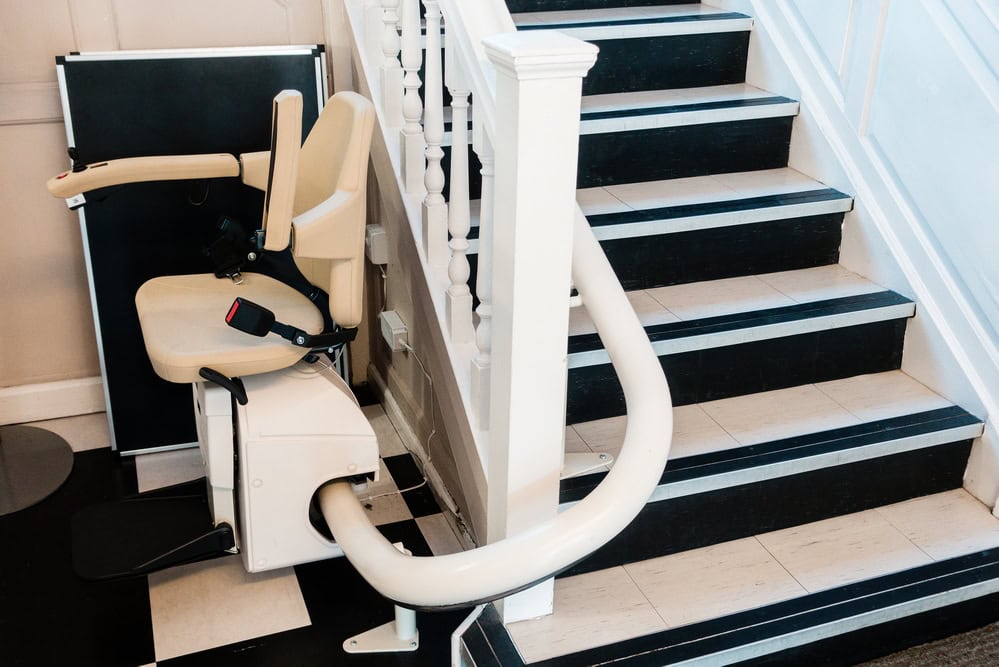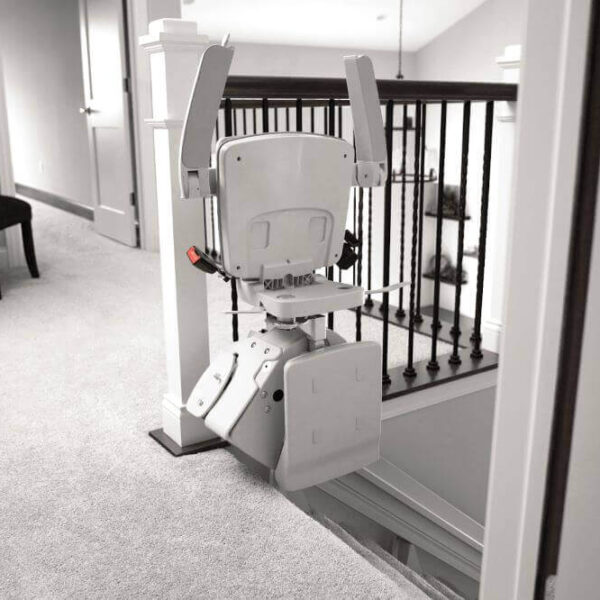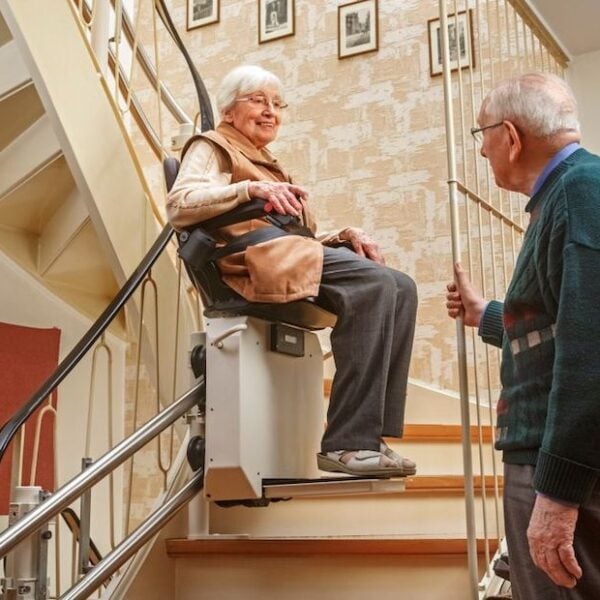
Essential Guide: Planning for a Home Elevator Installation with Ease
March 17, 2025
Expert Tips: Selecting the Perfect Stair Elevator for Your Staircase
March 31, 2025Using a stair lift can enhance your mobility and safety at home, especially if navigating stairs is challenging. This guide will teach you the simple steps to operate a stair lift effectively, ensuring a smooth and comfortable ride up and down your stairs. Understanding the controls and features will give you confidence while utilizing this assistive device, ultimately giving you an improved sense of independence in your daily life. Follow these easy instructions to make the most of your stair lift experience.
Key Takeaways:
- Stair lifts offer a convenient solution for individuals with mobility challenges, allowing them to access multi-level homes safely and independently.
- Regular maintenance and safety checks are essential to ensure the stair lift operates smoothly and reliably without any issues.
- Familiarizing oneself with the controls and features of the stair lift can enhance user confidence and promote safe usage.
Understanding Stair Lifts
To ensure you or your loved ones have mobility and safety at home, it’s essential to understand how stair lifts work. These devices are designed to transport users up and down stairs effortlessly, enhancing accessibility in multi-level dwellings. With technological advances, stair lifts have become more user-friendly and reliable, making them popular for individuals with mobility challenges.
What is a Stair Lift?
Even if you’re new to mobility aids, a stair lift is a chair that runs along a track installed on your staircase. It allows you to sit comfortably while being lifted up or down the stairs, providing convenience and safety. Stair lifts can be operated using a remote control or a joystick, making them easy for all ages.
Types of Stair Lifts Available
Now that you’re familiar with a stair lift, knowing about the available types is beneficial. Here’s a quick look:
| Curved Stair Lifts | Designed for stairs with bends, curves, or landings. |
| Straight Stair Lifts | Ideal for straight staircases, offering a more affordable option. |
| Outdoor Stair Lifts | Weather-resistant models are suitable for outdoor staircases. |
| Platform Stair Lifts | Used for those with wheelchairs or scooters, providing a larger platform. |
| Standing Stair Lifts | This is for users who can stand, often with a small footrest. |
This variety allows you to choose a stair lift that precisely meets your needs, ensuring safety and enhancing your mobility at home.
Evaluating what type of stair lift works best for your home environment and personal mobility requirements is essential.
| Convenience | Eliminates the need for assistance on stairs. |
| Safety Features | Includes seatbelts, swivel seats, and sensors. |
| Installation | Requires professional fitting for optimal function. |
| Battery Backup | Ensures operation during power outages. |
| Cost | Prices can vary based on type and installation. |
This information will help you make an informed decision and ensure a safe and effective solution to your mobility needs.
How to Choose the Right Stair Lift
Selecting the right stair lift is one of the most critical steps in enhancing your mobility. Consider your home’s unique characteristics and requirements to ensure you make the best decision. It’s vital to prioritize safety, comfort, and ease of use. Additionally, consult with professionals to facilitate your selection process, as they can provide invaluable insights tailored to your specific situation.
Assessing Your Needs
Understanding your specific needs is the first step in choosing an appropriate stair lift. Evaluate your mobility restrictions, the layout of your stairs, and any existing health conditions that may impact your usage. Your lifestyle demands should also guide your choice, ensuring the stair lift aligns seamlessly with your daily routine for optimal convenience and safety.
Factors to Consider
Now, when selecting a stair lift, consider these key factors:
- Space availability
- Weight capacity
- Safety features
- Type of stairs
- Cost and maintenance
Thou must ensure each factor aligns with your circumstances to guarantee a smooth experience.
A thorough examination of these factors will guide you in identifying the perfect stair lift. Ensure you assess your home’s structure and specific mobility needs to avoid mishaps. Consider features like seat width for comfort, safety belts for security, and battery backup for reliability during power outages. Additionally, take note of the installation process and available support services. It’s imperative to weigh the benefits against the costs, allowing you to make an informed decision that meets your needs effectively. Thou should take your time in this decision, as it profoundly affects your safety and comfort.
Installation Process
Once again, the installation process of a stair lift is straightforward, but it requires careful attention to detail. Before beginning, ensure you have all the necessary tools and materials ready. Familiarize yourself with the user manual and measure your stairs accurately. If you encounter any complications, don’t hesitate to consult a professional technician for assistance to ensure your stair lift is mounted securely and functions appropriately.
Preparing Your Home
On your journey to improved mobility, prepare your home by clearing the stairway of any obstructions. Ensure adequate space for the stair lift and check that your electrical outlets are compatible. It’s also beneficial to assess the stairs for stability, as a firm foundation is vital for safe installation.
Professional vs. DIY Installation
Depending on your comfort level, a stair lift can be installed by a professional or as a DIY project. While DIY installation may seem cost-effective, it requires considerable skill and time. A professional installation guarantees not only the safety of your stair lift but also compliance with local regulations.
Home installation can pose several challenges. If you go the DIY route, be aware that improper installation can lead to serious safety issues. You could risk damaging the stair lift or stairs, leading to expensive repairs. Conversely, hiring a professional ensures the stair lift is securely and safely installed, minimizing the chances of accidents or malfunctions. A professional can also address specific requirements based on your home’s architecture, providing peace of mind and reliable use for years.
How to Safely Use a Stair Lift
Despite the benefits of a stair lift, using it safely is essential for your well-being. Always ensure the stair lift is in good working condition, check for any obstructions on the stairs, and follow the manufacturer’s instructions closely. Approach the lift at a steady pace and never rush, as it can lead to accidents. With proper precautions, you can enjoy enhanced mobility with confidence.
Operating the Stair Lift
Operating a stair lift is straightforward but requires your attention. Once you are seated comfortably, ensure your seatbelt is fastened. Use the up or down button to begin your ascent or descent, holding the button until you reach your destination. Be aware of your surroundings and ensure no one is blocking the path to provide a safe and smooth ride.
Safety Tips for First-Time Users
Clearly, as a first-time user, adhering to safety measures is crucial. Here are some essential points to consider:
- Always check that the stair lift is in good working condition before use.
- Ensure that the path is clear of any obstructions.
- Fasten your seatbelt securely before operating.
- Never operate the stair lift without supervision initially.
- Assume that the lift is malfunctioning if you experience unusual sounds or movements.
Tips for ensuring a safe experience with your stair lift include being cautious while approaching the lift. It’s essential to be aware of your body positioning to avoid injury. After entering the lift, take a moment to adjust your seatbelt. Moreover, avoid carrying large items that may inhibit movement and obscure your view, as this can increase the risk of accidents. Always keep your hands and feet inside the stair lift and stay seated until the lift comes to a complete stop. Assume that your safety depends on closely following these guidelines.
Maintenance Tips for Stair Lifts
After installing your stair lift, regular maintenance is vital for ensuring its optimum performance and safety. Follow these tips for adequate upkeep:
- Check the battery regularly.
- Inspect the tracks for debris.
- Ensure all switches function correctly.
- Keep the lift lubricated as per the manual.
- Schedule professional maintenance sessions annually.
Recognizing the significance of maintenance will help you enjoy your stair lift’s service for many years.
Regular Checks and Services
You should conduct regular checks on your stair lift to ensure it is functioning smoothly. Look for signs of wear, listen for unusual noises, and test all controls to ensure they are responsive. It’s also advisable to schedule professional services at least once a year, as trained technicians can spot issues that may not be apparent to you.
Troubleshooting Common Issues
Services geared toward troubleshooting can help you identify and resolve issues quickly with your stair lift. Basic problems like inconsistent power or slow-moving lifts can usually be fixed through simple checks. If your stair lift won’t move, it could be due to a disconnected battery, a blockage in the track, or faulty wiring. Address these problems promptly to ensure your safety and the proper functioning of your stair lift.
Plus, it’s vital to be aware of more serious issues that might arise. If you encounter a grinding noise or strange vibrations, immediately stop using the stair lift and seek professional help. Ignoring these alerts can lead to significant damage and costly repairs, endangering your safety and the equipment. You can promptly address any irregularities and maintain a safe and reliable stair lift experience.
Tips for Enhancing Mobility and Safety
Many users can improve mobility and safety by implementing a few necessary practices. Consider the following tips:
- Ensure the stair lift is regularly serviced for optimal performance.
- Maintain clear pathways free of clutter.
- Assess and improve lighting on stairways.
- Install handrails on both sides of the stairs.
Recognizing the value of these adjustments will significantly enhance your overall experience and peace of mind.
Combining Stair Lifts with Home Modifications
Integrating your stair lift with other home modifications can further enhance mobility. Simple changes such as installing ramps, widening doorways, and ensuring that frequently used areas are easily accessible can create a safer living environment.
Additional Safety Devices
Adding safety devices alongside your stair lift provides an extra layer of protection. Devices like grab bars, non-slip mats, and emergency alert systems ensure you remain secure while moving around your home.
Integrating these additional safety features can significantly reduce the risk of falls and other accidents. For instance, grab bars provide extra support when using your stair lift or navigating stairs, while non-slip mats help prevent slipping accidents in high-traffic areas. Moreover, with the implementation of an emergency alert system, you can quickly call for help in case of an incident, offering peace of mind for both you and your loved ones.
Final Words
Conclusively, using a stair lift can significantly enhance your mobility and safety within your home. By following the simple steps outlined, you can quickly and easily integrate this device into your daily life, ensuring you can confidently and easily navigate stairs. Whether for yourself or a loved one, understanding the operation and benefits of a stair lift empowers you to make informed decisions for maintaining independence and comfort in your living environment.
Q: What are the key benefits of using a stair lift for mobility and safety?
A: Stair lifts offer several advantages for individuals with mobility challenges. First, they provide safe and easy access to different levels of a home, reducing the risk of falls and injuries associated with climbing stairs. Second, stair lifts can enhance independence, allowing users to navigate their living spaces without requiring assistance from others. Third, modern stair lifts are designed with user-friendly controls and safety features, ensuring a comfortable and secure experience.
Q: How do I properly operate a stair lift?
A: Operating a stair lift is generally straightforward. Begin by sitting comfortably in the seat and securing the safety belt, if available. Use the controls on the armrest to move the lift up or down the stairs. Ensure that the path is clear of obstacles before starting. Some stair lifts may also have a remote control option, allowing you to call the lift to your location. Always familiarize yourself with the specific model’s instructions to optimize safe usage.
Q: What maintenance is required for a stair lift to ensure optimal performance?
A: Regular maintenance is crucial for keeping a stair lift in good working condition. Users should periodically check for any obstructions on the track and ensure that the seat, footrest, and safety features function correctly. It is advisable to have the stair lift serviced by a professional technician annually to inspect the mechanical components and battery. Keeping the lift clean and paying attention to any unusual sounds or behavior can help prevent more significant issues from arising.

Introducing Jeff Cates, the visionary Founder and Owner of CAPS Remodeling. After experiencing a profound personal event involving his son in 2007, Jeff was inspired to serve a higher purpose: to create safer, more comfortable, and independent living conditions for the elderly and disabled by modifying their current homes. Jeff’s deep-seated religious beliefs form the moral compass that steers CAPS daily operations. Apart from his unwavering dedication to his work, Jeff finds joy in boating and cherishing moments with his family.



